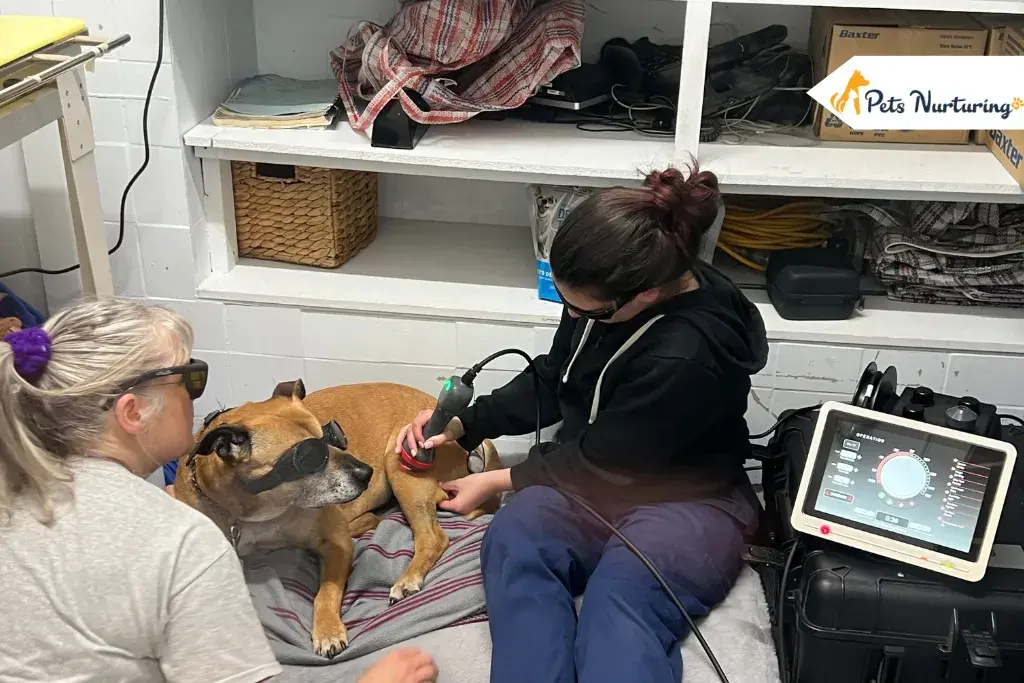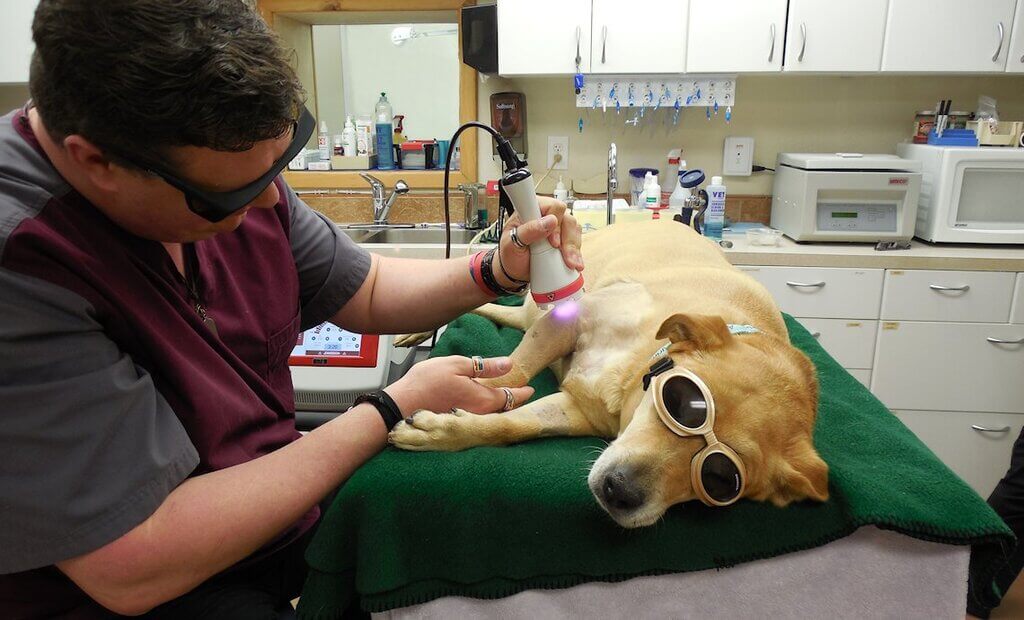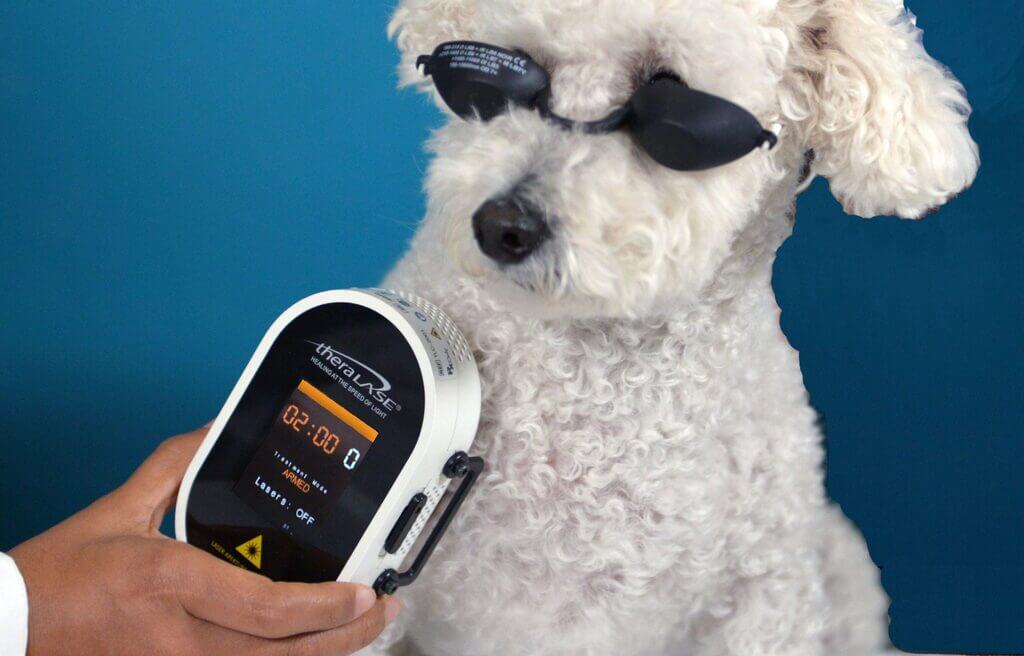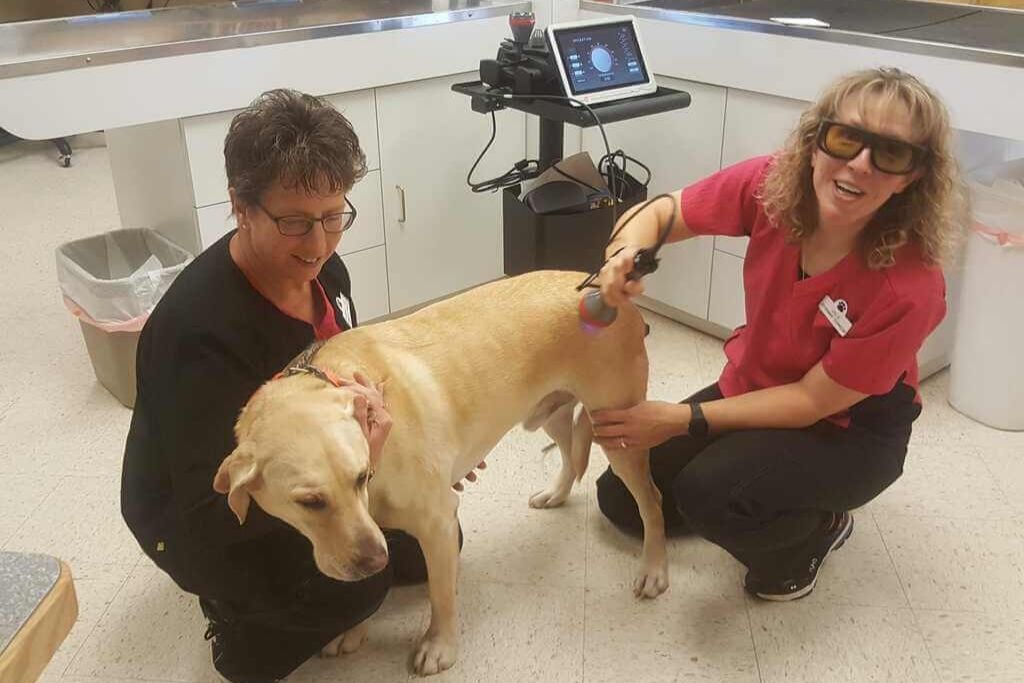
Can you bear your pet in pain? Of course not. If your pet is experiencing pain or discomfort, it should be important for you to relieve it from distress. Laser therapy is an innovative technique. It is a pain-free, drug-free, and surgery-free treatment. It helps reduce pain by producing endorphins that enhance the injured cells to heal quicker. Decreasing inflammation through opening blood vessels and depleting the swelling region can lessen pain.
- Type of Conditions Where Laser Therapy Can Be Used
- How Long Does the Laser Treatment Your Dog Need?
- How Many Laser Therapy Sessions Will Your Dog Need?
- Cost of Laser Therapy
- What Kind of Laser Therapy Is Being Used?
- Cold Laser Therapy
- How Does Laser Therapy Work?
- What Risks Are Involved During Laser Therapy?
Type of Conditions Where Laser Therapy Can Be Used

- Arthritis/hip dysplasia: Deformity occurs during the growth period. Hip joint acts as a ball and socket. The femur head and pelvic require growth at equal rates. But it does not occur in hip dysplasia.
- Osteoarthritis: is a joint disease that leads to the permanent decline of cartilage whose function is to protect joints.
- Back pain: back in dogs is due to various conditions like weight gain, arthritis, an injury, or degenerative diseases.
- Ear infection: three types of conditions occur otitis media, otitis externa, and otitis interna. These infections can cause deafness and facial paralysis.
- Soft tissue trauma: soft tissues are bone-less tissues like the tongue, lips, and tonsils.
- Tendon and ligament injury occurs specifically in larger and heavy dogs. There is a fracture of the tendon to the joint that leads to pain.
- Anal gland infection: on the anus, the abscess will show red, painful swelling. When these abscesses rupture, bloody pus is released, and badly damage to the anus
- Urinary tract problem: dogs may experience urinary tract issues like prostate, urethra, and bladder infections.
- Gastrointestinal (GI) disorder: the stomach and intestine are affected by digestive disorders. Some digestive diseases include acute gastroenteritis, colitis, constipation, diarrhea, and pancreatitis.
How Long Does the Laser Treatment Your Dog Need?
The duration of laser therapy depends upon various factors like the size of the patient, treatment area, how many treatment areas, and severity. Treating a single site requires 5-10 minutes, but a dog with a larger size with distinct joint issues needs 45 minutes.
How Many Laser Therapy Sessions Will Your Dog Need?

Laser therapy sessions rely upon the chronic or acute disease condition and which type of laser is used. Some veterinarian treats their patients 2-3 times per week for 2-3 weeks. Also, there is the relatively new option to use a cold laser therapy device for dogs at home without the need to go to the vet every week,
Cost of Laser Therapy
The cost of laser therapy for dogs usually varies and ranges from $25 to $100 per session. It is based on the class used, the treated area’s condition or size, and the treatment duration. Other medications or surgical treatments may be more pricey than laser therapy.
What Kind of Laser Therapy Is Being Used?
There are various types of lasers being used to treat pets. But in the field of veterinary two significant kinds of lasers are used, a cold laser that provides relief from pain and a surgical laser that involves cutting the tissue.
Cold Laser Therapy

Class IV Laser Therapy or Cold laser therapy (CLT) works by using the light beam in the form of photons with particular frequencies that penetrate deep into the tissues giving a warm feeling without damaging a healthy one. As the name shows, “Cold therapy” means this therapy does not allow the tissue to produce excessive heat, unlike burns of a surgical laser.
Different classes are used in dog laser therapy, but the most common are class three and class four.
How Does Laser Therapy Work?
Laser therapy quickens healing, promotes the regeneration of cells, and improves blood circulation. A biochemical reaction occurs when a light beam enters tissues called photobiomodulation, having a specific wavelength that only acts on damaged tissue, not healthy ones.
What Risks Are Involved During Laser Therapy?

It is a safe and painless treatment for dogs with small risks. Sometimes, high-power surfaces may burn, but the safety techniques are unlikely to occur.
When we use a laser at the tumor site, it may increase the growth of tumor cells. Laser therapy should not prefer to use in case of metastasized neoplasia because it can spread to other regions.
Laser light can cause retinal damage if it is directed at an eye. So during treatment, the dog and staff must use defensive goggles.
Explore further :











